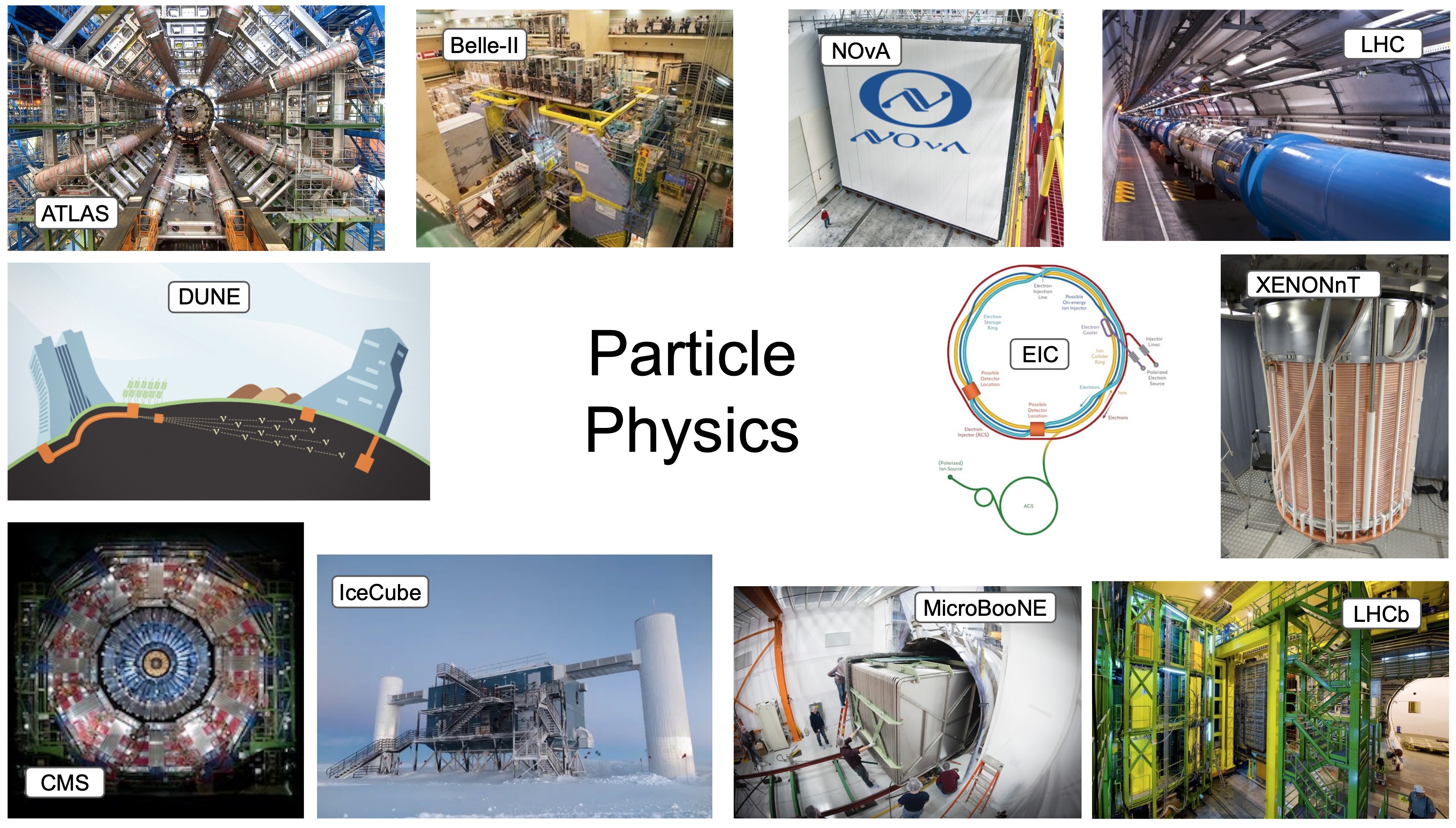Our Mission
The Community Laboratory for AI Research at the Intersection with Physics (CLARIPHY) is a multidisciplinary collaborative effort between the broad particle physics community and the artificial intelligence, machine learning and data science research communities. It aims to understand how cutting-edge data science can radically extend the discovery potential of large data-intensive particle physics experiments while simultaneously providing a unique environment for driving AI/ML and data science research in new directions. Our collaboration pursues research activities which advance the required foundational research in this area as well as building the pathways for transformative applications in physics.
Particle Physics and Artificial Intelligence
Human beings have established that the subnuclear building blocks of all known matter are quarks and leptons whose interactions are governed by a self-consistent quantum field theory known as the Standard Model of particle physics. Its key theoretical ideas date back more than 50 years, but experimental verification has come only after sustained effort. From the mid-1980’s through the discovery of the Higgs Boson in 2012, a series of diverse and progressively more sophisticated particle detectors and accelerators, deployed worldwide, have searched for, discovered and measured the last elements of the Standard Model.
A key question is how particle physics research can be open to the widest possible set of potential discoveries, and understand how to interpret them once seen. AI and Machine Learning offer exactly this potential: if we are successful with CLARIPHY, we can significantly expand the discovery reach of all particle physics experiments by changing the nature of how we approach designing experiments, the community vision of data and its potential and our overall approach to discovery. This is a moonshot, but the impact will be enormous if successful.
CLARIPHY is working to bring together the AI and particle physics communities to work jointly on research that will drive discoveries in both fields. The potential for transformative progress in AI results from engaging with particle physics research because it encompasses a broad spectrum of types of data and learning tasks all within the framework of a single domain with a highly mathematical theoretical underpinning and copious amounts of data, including from detailed simulations. The range of tasks spans from performing high-precision measurements on enormous data sets to the discovery of extremely rare phenomena, providing a variety of challenges for AI.
The discovery potential in particle physics is tremendously enhanced because AI approaches are ideally suited to extracting high-level insights from low-level, high-dimensional data. AI has the potential to make physics analysis more sensitive, faster, and more robust. By fostering the intellectual community as well as providing the necessary cyberinfrastructure, including hosted datasets, reference algorithms, and documentation, CLARIPHY will serve as a vital nexus to facilitate both AI and particle physics breakthroughs that would not emerge from those fields in isolation.
